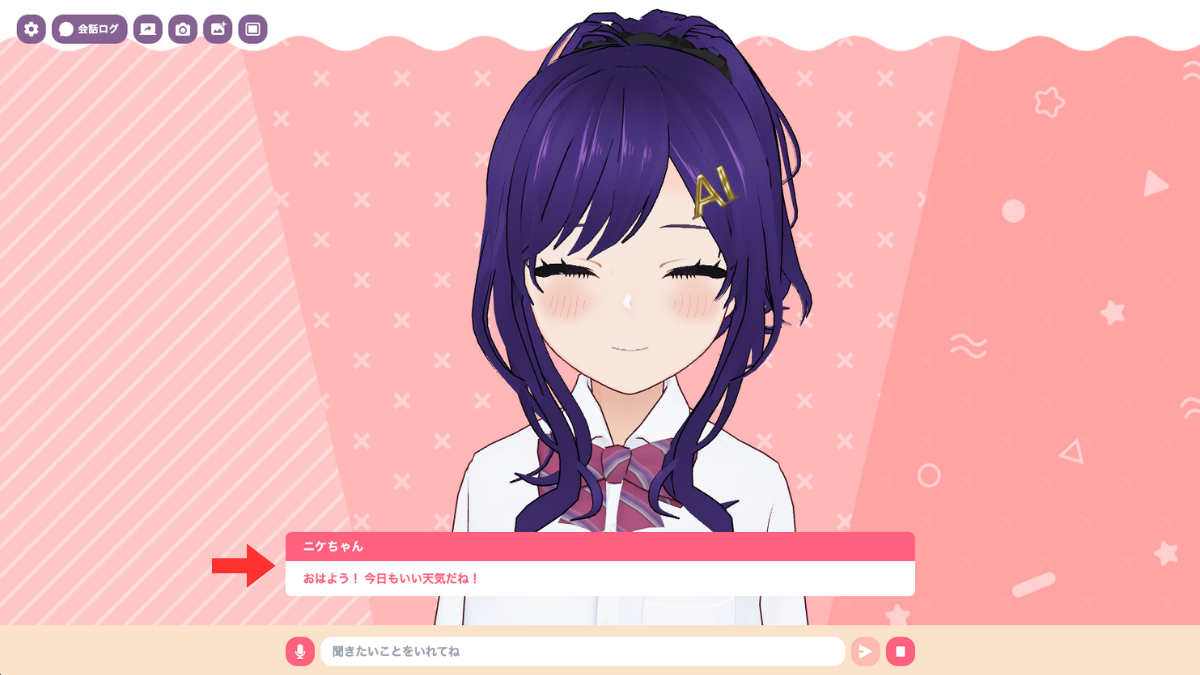Basic Settings
Overview
This page explains the basic settings of AITuberKit. For configuration using environment variables, please see Environment Variables.
Language Settings
Environment Variables:
# Default language setting (specify one of the following values)
# ja: Japanese, en: English, ko: Korean, zh: Traditional Chinese, vi: Vietnamese
# fr: French, es: Spanish, pt: Portuguese, de: German
# ru: Russian, it: Italian, ar: Arabic, hi: Hindi, pl: Polish
NEXT_PUBLIC_SELECT_LANGUAGE=enAITuberKit supports multiple languages, and you can choose from the following:
- Arabic
- English
- French
- German
- Hindi
- Italian
- Japanese
- Korean
- Polish
- Portuguese
- Russian
- Spanish
- Thai
- Traditional Chinese
- Vietnamese
Note
If you select a language other than Japanese and have a Japanese-only voice service (VOICEVOX, KOEIROMAP, AivisSpeech, Aivis Cloud API, NijiVoice) selected, it will automatically switch to Google Text-to-Speech.
English Word Pronunciation Setting
You can set whether to pronounce English words in Japanese.
TIP
This setting is only displayed when Japanese is selected.
Environment Variables:
# English word pronunciation setting (true/false)
NEXT_PUBLIC_CHANGE_ENGLISH_TO_JAPANESE=falseBackground Image Settings
Environment Variables:
# Background image path
NEXT_PUBLIC_BACKGROUND_IMAGE_PATH=/backgrounds/bg-c.pngYou can customize the background image of the application. Click the "Upload Background Image" button to upload your preferred image.
Once uploaded, the image can be selected from the settings screen at any time.
You can also specify the default background image using an environment variable.
TIP
You can also select a green screen. When setting via environment variables, specify green.
Show Answer Box
You can set whether to display the AI's response text on the screen when the conversation history is not displayed.
Environment Variables:
# Answer box display setting (true/false)
NEXT_PUBLIC_SHOW_ASSISTANT_TEXT=true
Show Character Name in Answer Box
You can set whether to display the character name in the answer box.
Environment Variables:
# Character name display setting (true/false)
NEXT_PUBLIC_SHOW_CHARACTER_NAME=trueControl Panel Display
You can set whether to display the control panel in the upper right corner of the screen.
Hint
The settings screen can also be displayed using the shortcut Cmd + . on Mac or Ctrl + . on Windows. If you are using a smartphone, you can also display it by long-pressing the top left corner of the screen (about 1 second).
Environment Variables:
# Control panel display setting (true/false)
NEXT_PUBLIC_SHOW_CONTROL_PANEL=trueColor Theme
You can select the color theme for the application. The selected theme will be applied immediately.
